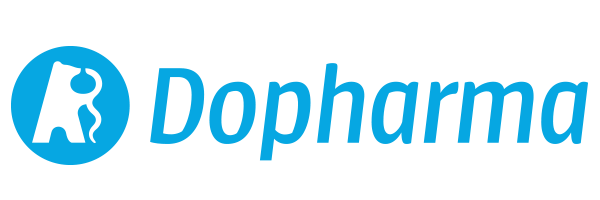EMA advice on the withdrawal period of lidocaine in food producing animals
The EMA recently published a report on the withdrawal period of lidocaine for milk. In general, when veterinary medicinal products are used through the cascade, the minimal withdrawal period for milk is 7 days. Based on the EMA advice, the withdrawal period for lidocaine should be extended to 15 days.
The cascade
In the Netherlands lidocaine is only registered for use in dogs and cats. Lidocaine can only be used in food producing animals when the cascade is applicable. Lidocaine is mentioned on the list of active ingredients belonging to regulation (EU) no 37/2010. This is a prerequisite for the application of the cascade in food-producing animals. Other conditions are the need for treatment, particularly to avoid suffering in the animals, and the lack of a registered veterinary medicinal product for the species and indication concerned.
For equines, no MRL (Maximum Residue Level) is needed as long as the product is used for local or regional anaesthesia. For the other food producing species no MRL has been determined. When using a product through the cascade, the minimal withdrawal period should be at least as long as the withdrawal period mentioned in the SPC for the species concerned. When there is no withdrawal period mentioned for the species concerned, the withdrawal period must be at least 7 days for eggs and milk and 28 days for meat.
New insights
The MEB (Medicines Evaluation Board) in the Netherlands has requested the EMA in December 2012 to provide a scientific opinion on the usage of lidocaine in food producing animals. This request was made as a result of recent research studies in which it was shown that 2,6-xylidin is one of the most important metabolites of lidocaine in cattle and pigs. This metabolite is considered carcinogenic and genotoxic.
Besides the possible effects of exposure to the metabolite 2,6-xylidin, the MEB was also concerned about exposure to the active ingredient lidocaine. Humans are also capable of producing this carcinogenic and genotoxic metabolite of lidocaine.
What did the EMA think?
The CVMP (Committee for Medicinal Products for Veterinary Use) of the EMA concluded that 2,6-xylidin has indeed got a potential genotoxic effect, but that the conclusions drawn in different studies differ largely. A carcinogenic effect was however clearly shown according to the CVMP. Changes in the DNA could be a possible mode of action for this carcinogenic effect.
The CVMP recognised the potential risk of exposing people to lidocaine and therefore the possible formation of potentially carcinogenic and genotoxic metabolites. But it was also pointed out that, on the other hand, lidocaine is also registered for human use as a short-term oral or topical treatment. However, they did comment that the benefit-risk assessment done for the approval of lidocaine as human medicinal product also factors in the positive effects of treatment which do not count when consuming residues through animal products.
Horses
The MEB mentioned that when it was decided that no MRL was needed for equines, it was taken into consideration that the metabolite 2,6-xylidin is not produced in horses. The CVMP contradicts this and states that this metabolite is produced in horses, but to a lesser extent than in other animal species.
The CVMP did conclude that with the available information, there is no need to change the MRL for equines as mentioned in Regulation EU No 37/2010.
Cattle
Previously, it was not known if cattle were able to produce the metabolite 2,6-xylidin. Based on this it was decided not to allow a MRL for use in cattle.
Recent research has shown that 2,6-xylidin is the most important metabolite that is formed in hepatocytes and microsomes extracted from livers of cattle and pigs when exposed to lidocaine. This was an in vitro study. The metabolite was however also found in the urine of cattle and pigs after the intravenous administration of lidocaine.
Hoogendoorn et al have recently published a study in which the pharmacokinetics of lidocaine and its metabolite 2,6-xylidin were described in 8 dairy cows. In these animals lidocaine with adrenaline was injected subcutaneously and intramuscularly as is done for a caesarean. Five times 30 ml was used. This study group showed that both lidocaine and 2,6-xylidin can be found in plasma, milk, muscles and kidneys.
The CVMP has calculated values below which, in theory, there should be no risk for public health. This had to be done because there is no MRL available. Based on the studies done by Hoogendoorn et al a termination half-life of 17.7 hours was used. When a two-compartment model with a rapid elimination phase is used, the advised withdrawal period for meat would have to be at least 11 days. When the same method is used, the minimal withdrawal period for milk should be 15 days.
Based on these studies and the calculations made by the CVMP, the EMA concluded that a withdrawal period of 28 days for meat is sufficient. It was however advised to extend the withdrawal period for milk to 15 days.
Pigs
When it was determined that no MRL was required for equines, there was also no information available about the metabolism in pigs. Recent reports do not include information about the metabolism of lidocaine in pigs either. The metabolism in pigs is however similar to that of cattle. It can thus be concluded that the withdrawal period of 28 days for meat is also sufficient to ensure public health. For pigs, it was also taken into account that lidocaine is primarily used during castration, which is usually done within the first week of life, resulting in a long period between the administration of lidocaine and slaughter.
References
- Thuesen, L.R., and Friis, C. (2012) In vitro metabolism of lidocaine in pig, cattle and rat. Poster presentation EAVPT Congress 2012, The Netherlands.
- F. Verheijen, Medicines Evaluation Board Agency (2012) Request for a scientific opinion.
- European Medicines Agency (EMA), Committee for Medicinal Products for Veterinary Use (CVMP) (2015) CVMP assessment report regarding the request for an opinion under Article 30(3) or Regulation (EC) No 726/2004.
- European Medicines Agency (EMA), Committee for Medicinal Products for Veterinary Use (CVMP) (2015) Opinion of the Committee for Medicinal Products for Veterinary Use regarding a request pursuant to Article 30(3) of Regulation (EC) No 726/2004.
- European Medicines Agency (EMA), Committee for Medicinal Products for Veterinary Use (CVMP) (1999) Lidocaine Summary Report.


